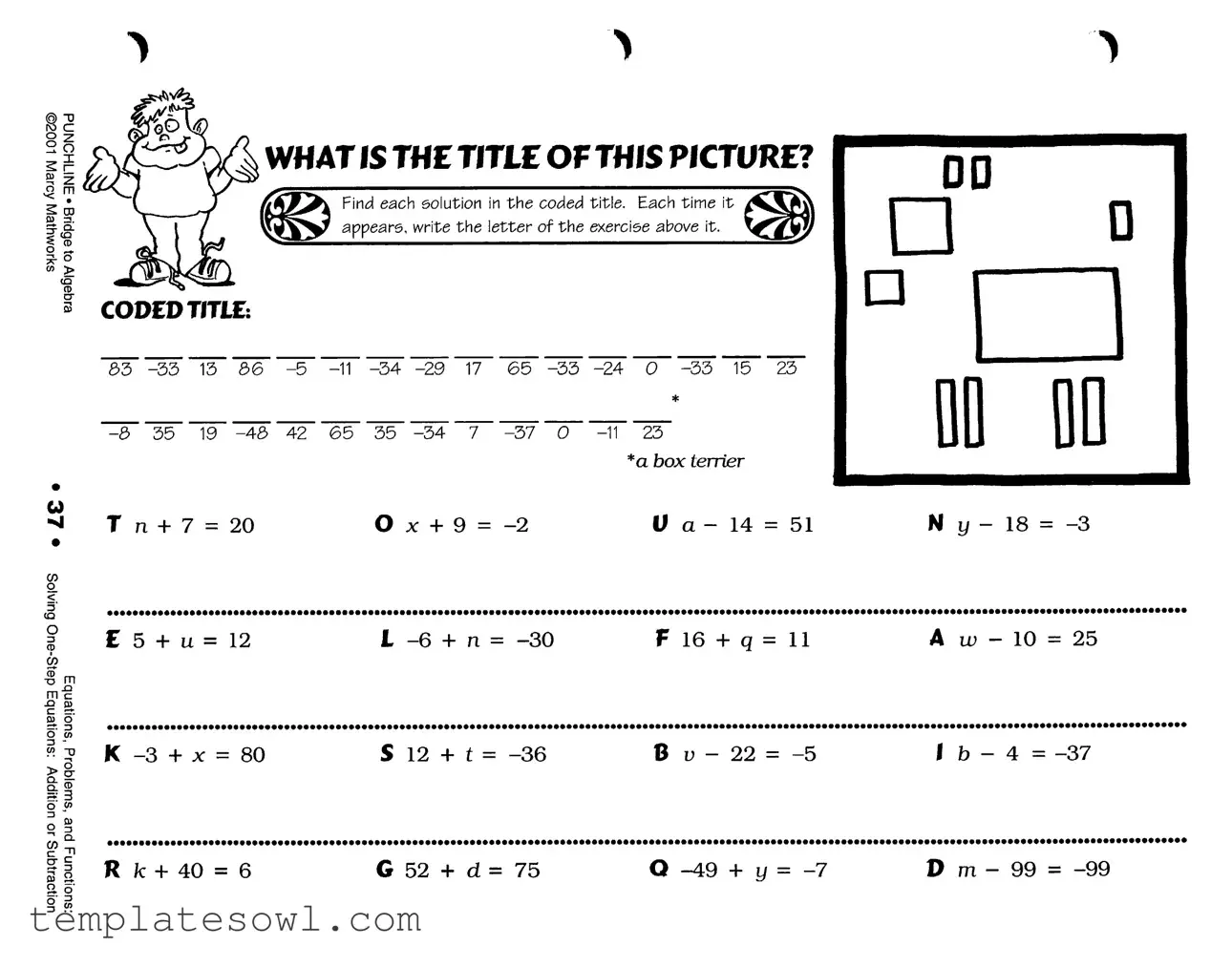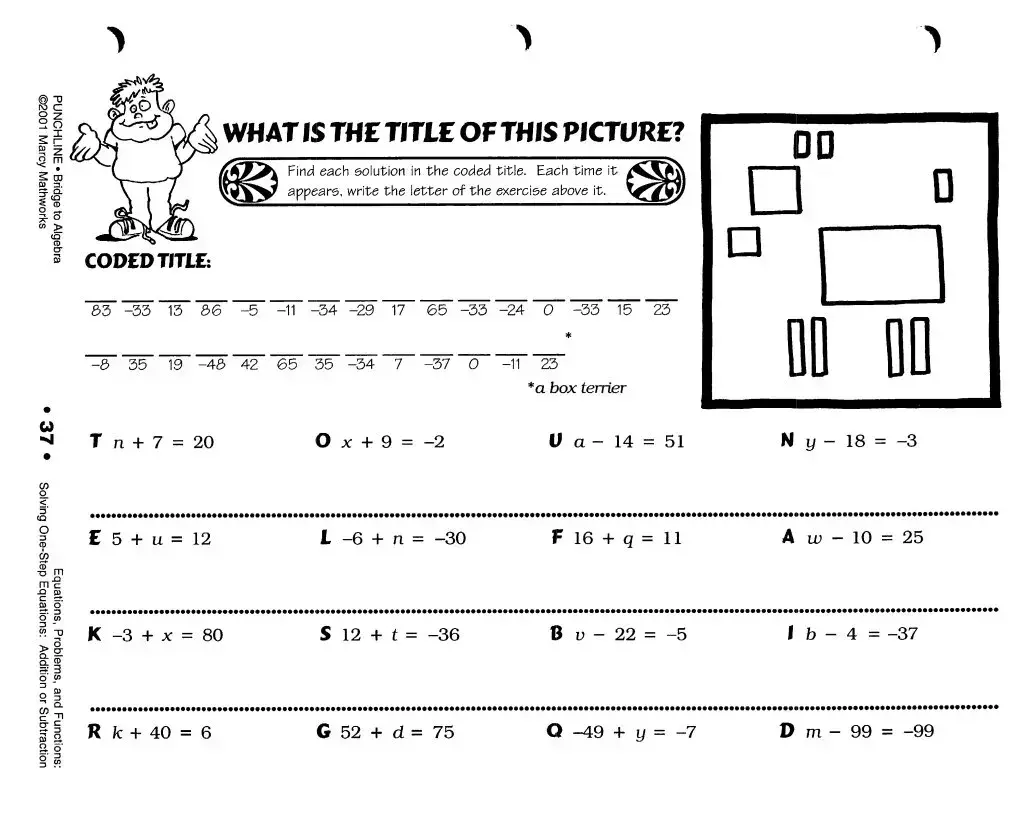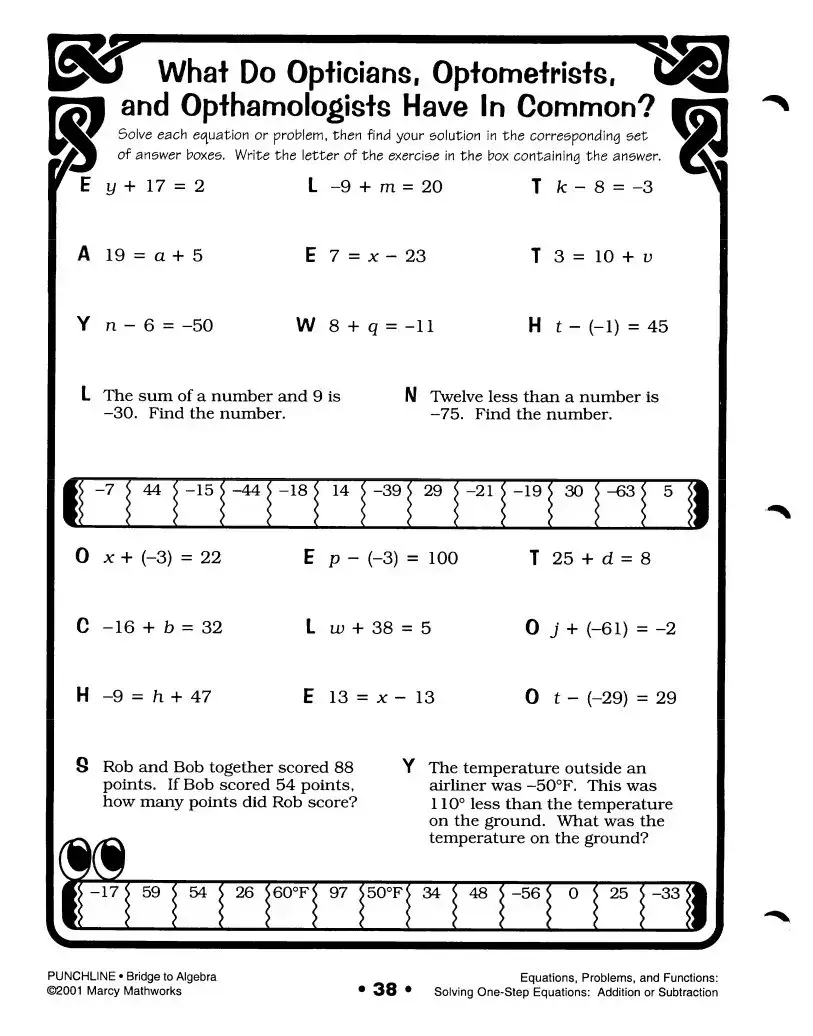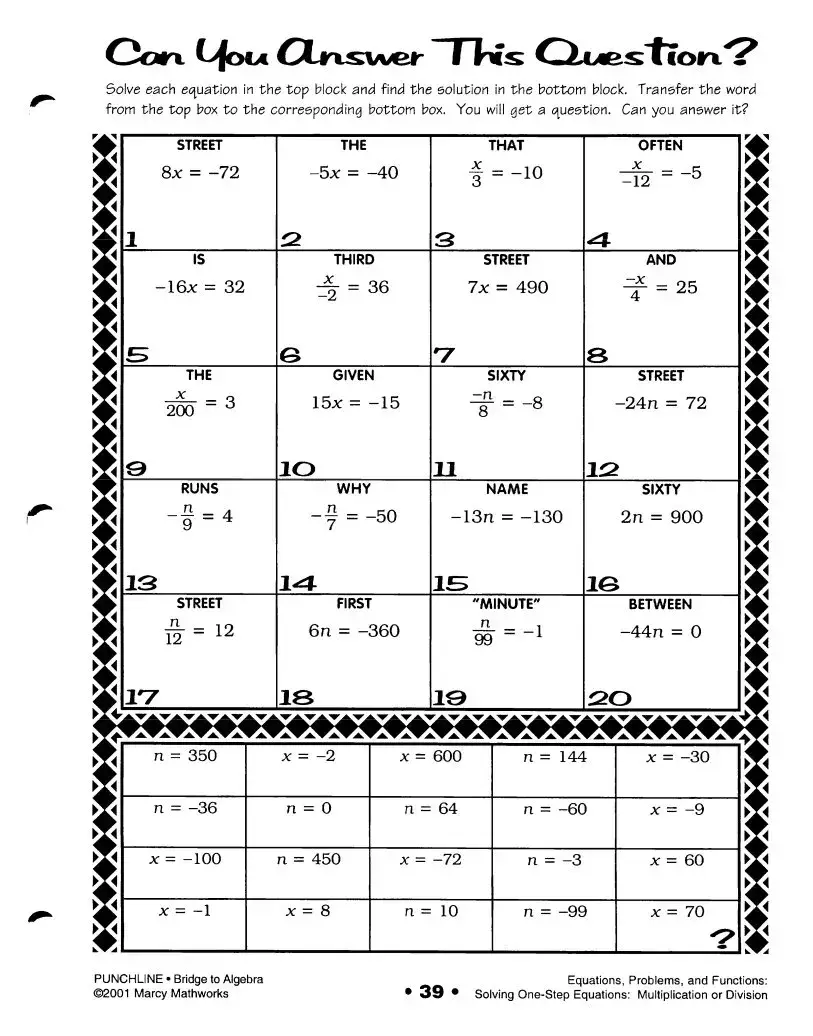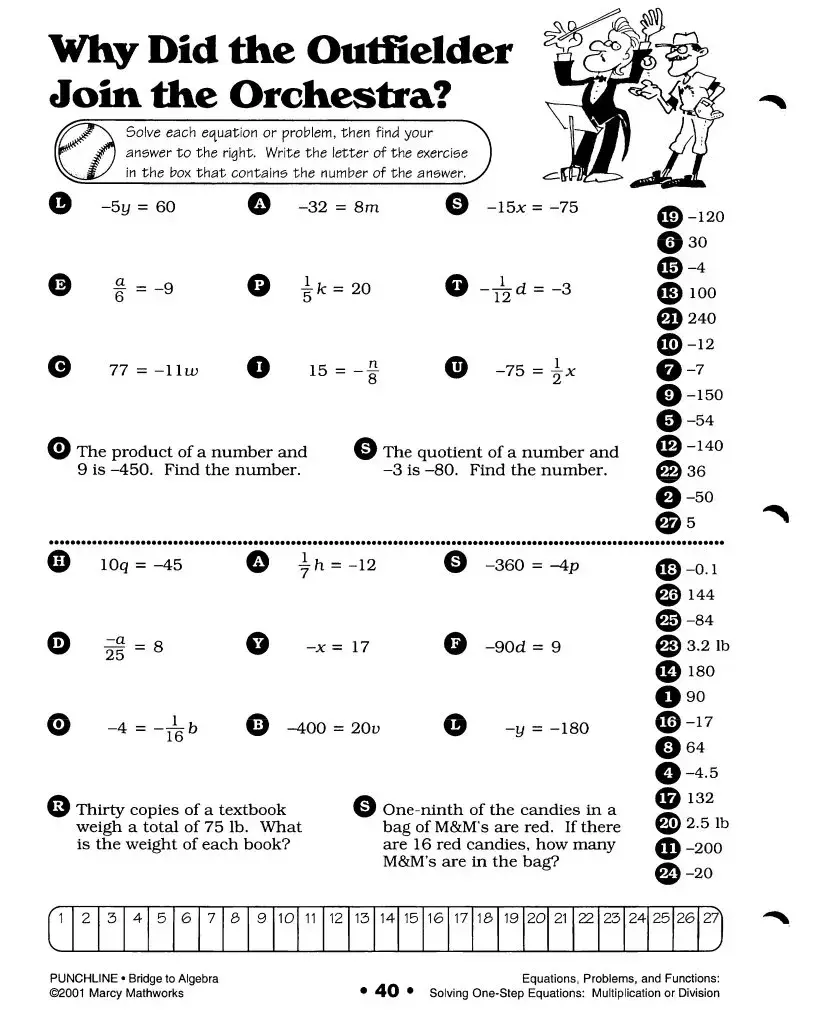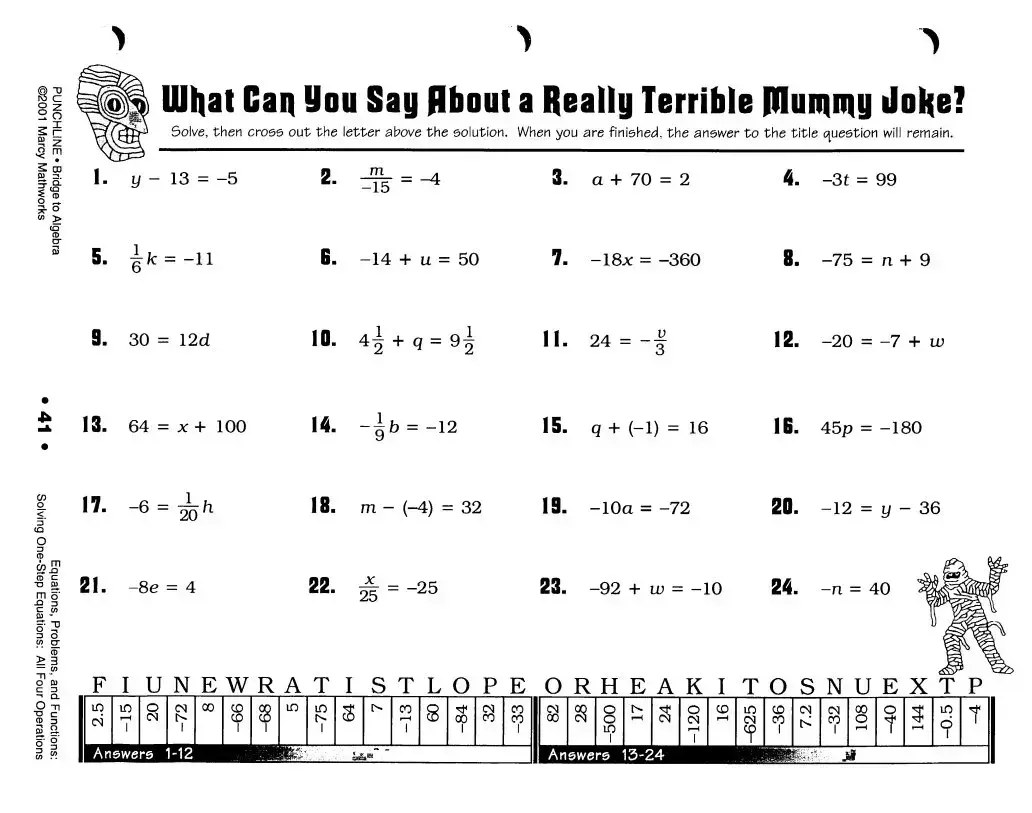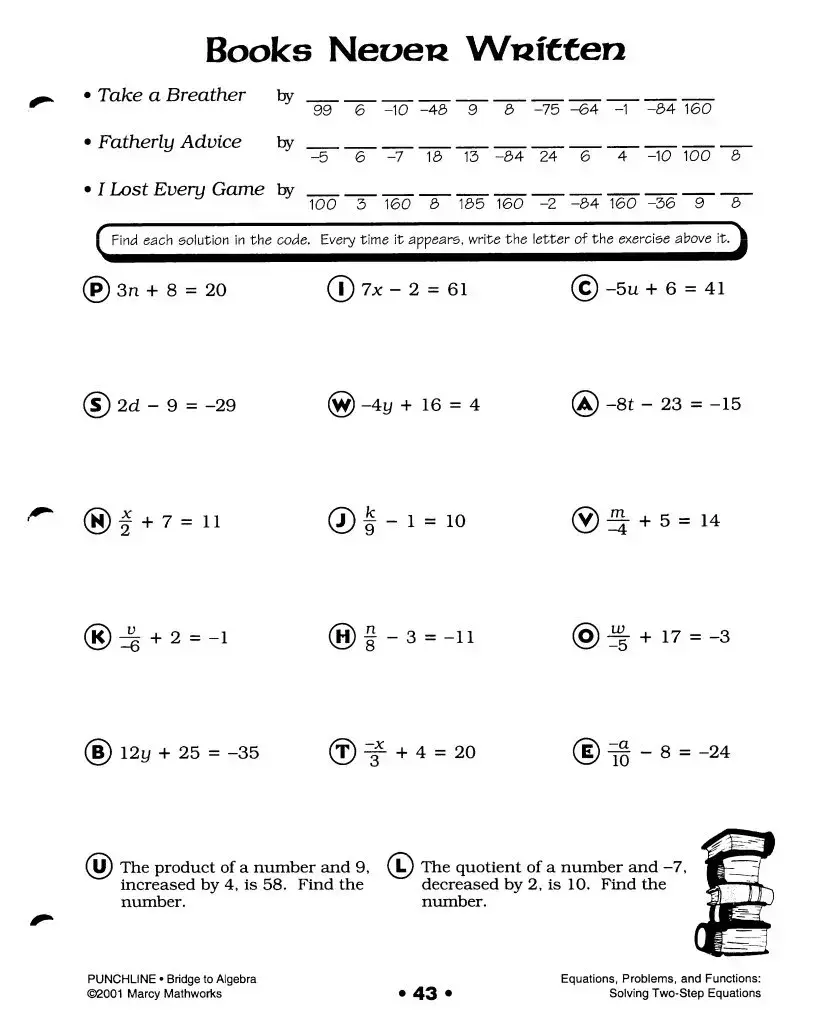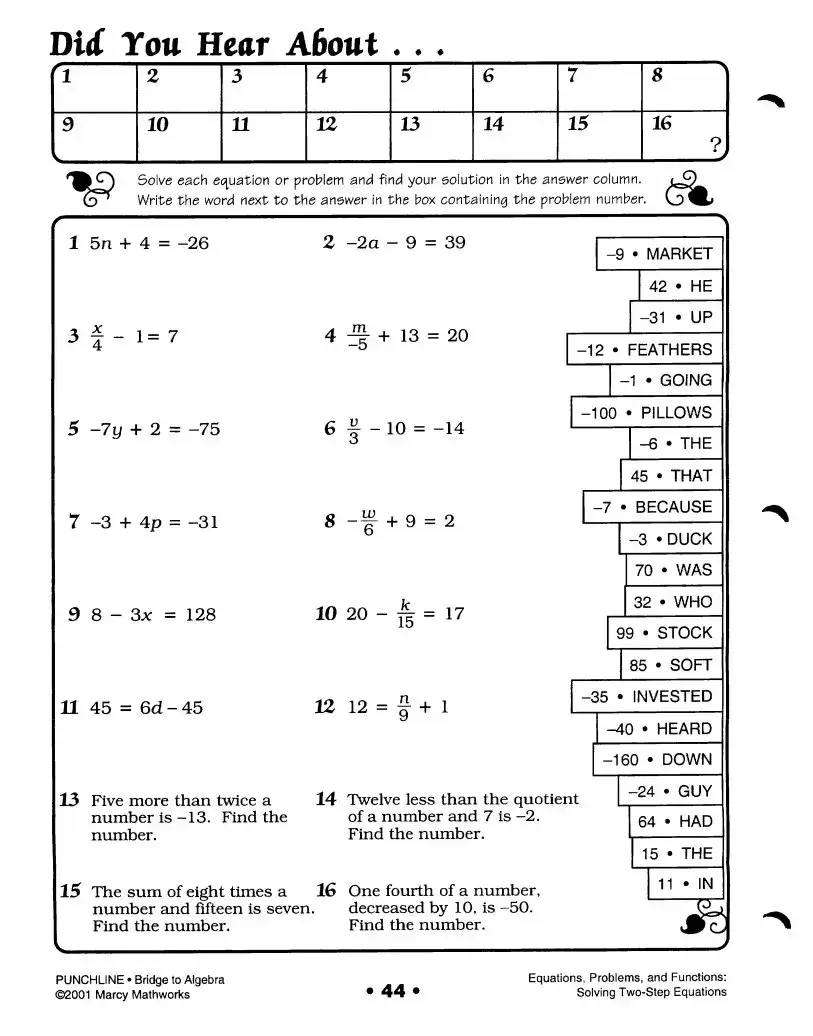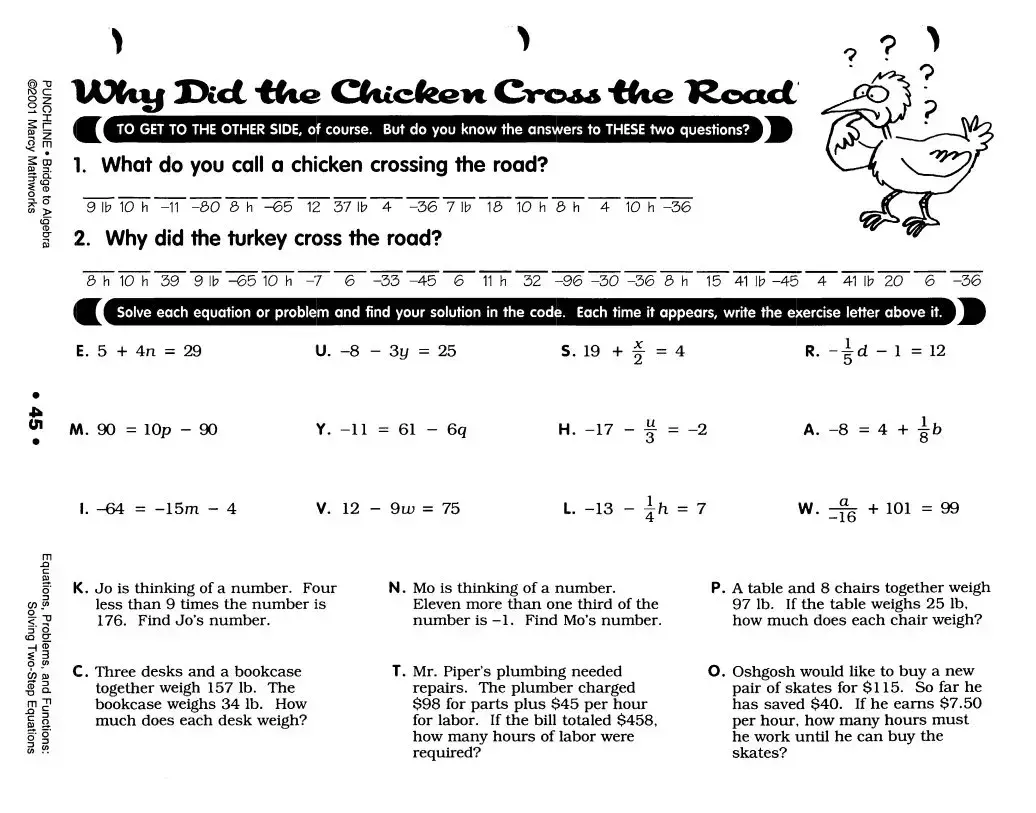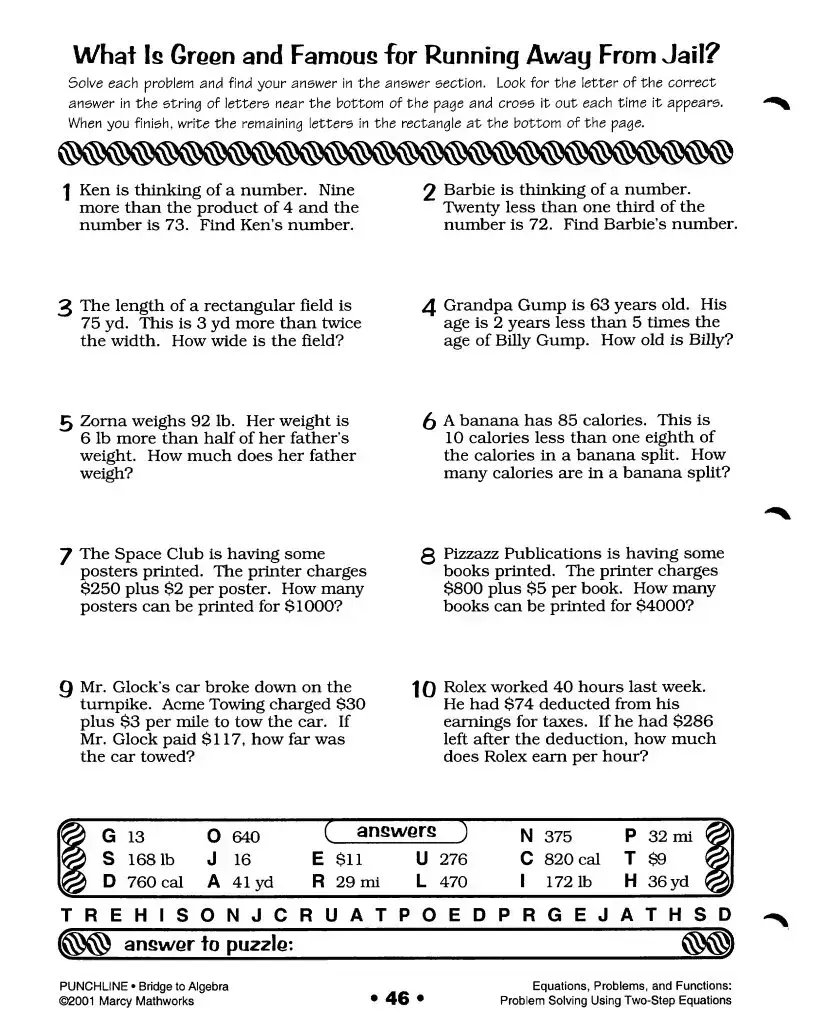When filling out the Punchline Bridge to Algebra form, many individuals accidentally make mistakes that can hinder their performance and understanding. One common error is overlooking the instructions at the top of the page. The detailed instructions guide participants on how to solve equations, but if one simply jumps to answering without reading these guidelines, missteps are likely to occur.
Another frequent mistake involves misinterpreting the equations themselves. The various algebraic expressions may appear daunting, but each has a specific solution. People often rush to conclusions without breaking down the components of the equations, leading to incorrect answers. Taking a moment to dissect each equation can illuminate the path to the correct solution.
A third mistake arises from not double-checking the answers before writing them in the designated boxes. It is easy to transpose numbers or misplace a sign during this phase. Such small errors can drastically alter the final outcome and may contribute to misunderstandings in subsequent sections. Always reviewing the calculations can mitigate this issue.
Additionally, failing to connect the answers back to the correct questions can pose a significant problem. The answers are often trapped in a series of boxes, and individuals may place a solution in the wrong response area, which obscures the logic of the problem. Keeping track of which answer belongs to which question requires careful attention.
Moreover, some individuals may not realize that the equations vary in difficulty. Consequently, they may spend excessive time on challenging problems, leaving less time for simpler ones. Prioritizing which problems to tackle first can enhance efficiency and ensure that all questions are addressed.
Lack of understanding regarding how to manipulate negative numbers often leads to mistakes as well. Many equations feature negative coefficients or results, and misunderstanding these can yield incorrect final answers. Practicing basic operations with negative numbers may build confidence and accuracy.
A further issue is not accurately translating word problems into mathematical equations. The problem involving Rob and Bob's scores, for instance, requires careful reading to abstract the necessary equations correctly. Individuals may misrepresent the data, leading to flawed interpretations of the questions.
Furthermore, some may fail to utilize scratch paper effectively. Jotting down intermediate steps can clarify thoughts and minimize errors. Without this practice, individuals may lose track of calculations or their thought processes, leading to confusion.
Finally, a lack of time management can hinder performance. People often underestimate the time required for each section or question. Setting a time limit for solving each problem can help maintain the pace and ensure completion of the form.
